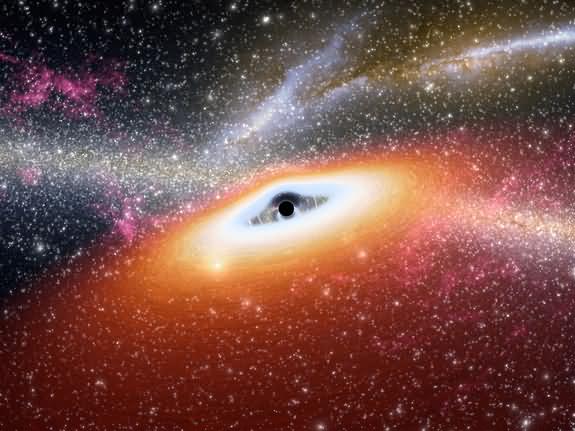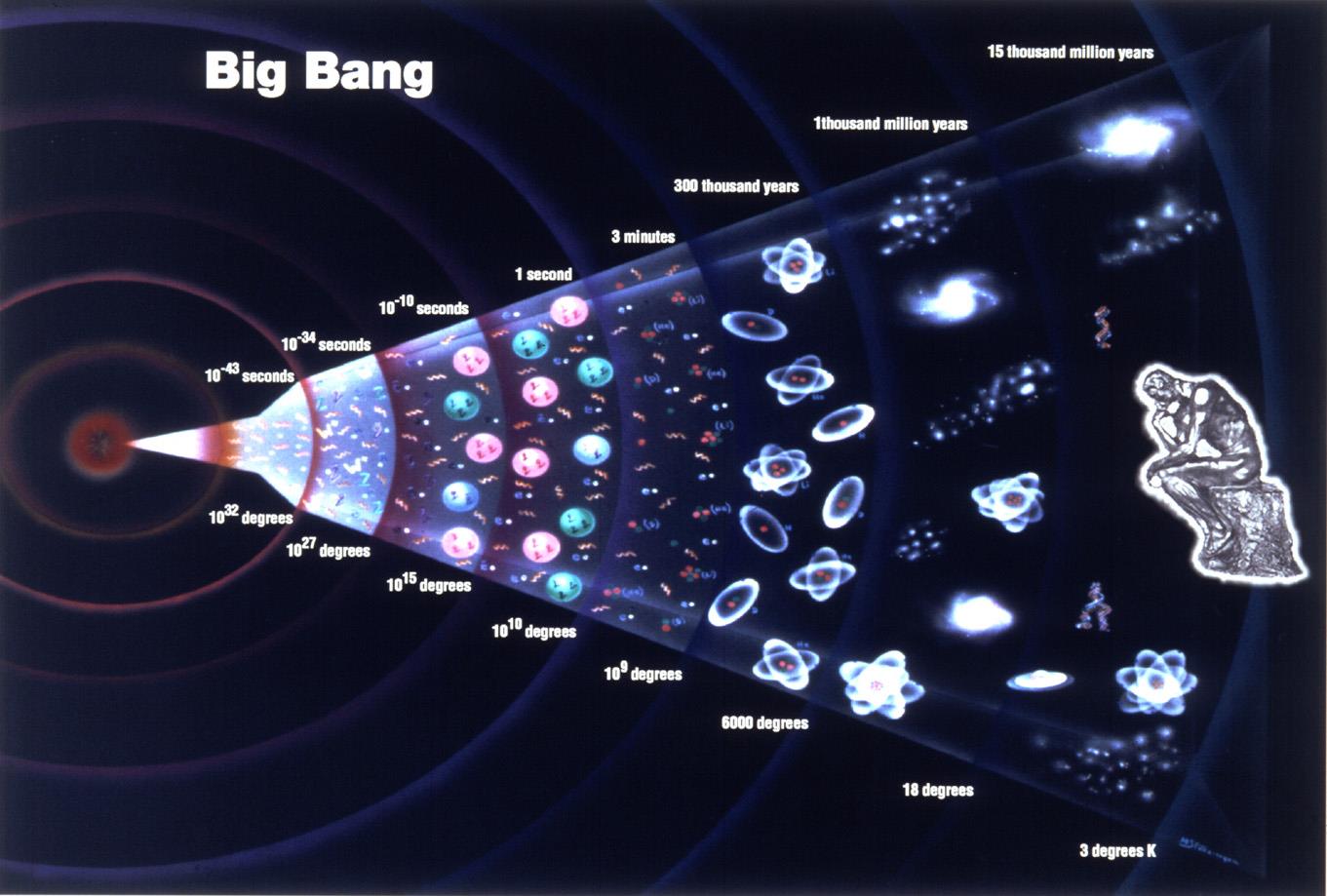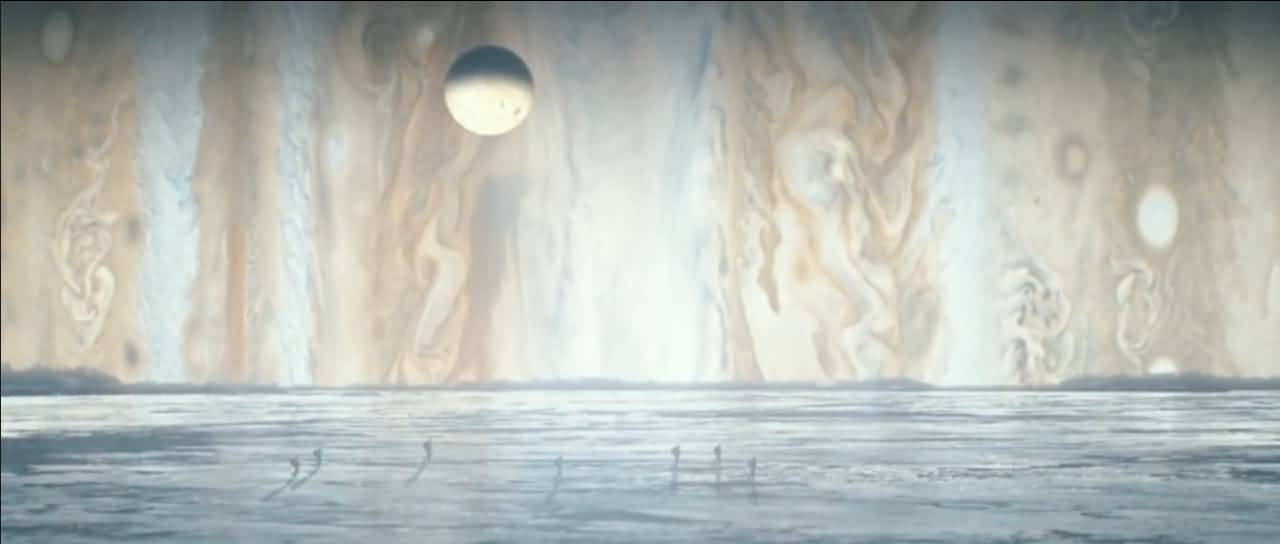Brainstorming Fun with Friends - Beginner
Yes, it was a great title to start with. People take pictures and write about ice cream with friends, vacation with friends, cart fun, and curt fun, so I figured why not write an essay like this? It turned out great, and it turned out nicely.
This idea first came to me two days ago. I came up with a strange question somewhere, shared it on my Facebook profile, and forced my friends to brainstorm ideas by tagging them. I figured I'd share it in this category as I found good questions. That is, if they keep participating, of course :)
I asked our first question and the rest followed.
I: Question 1: If nothing can escape from a black hole, how do gravitons escape, since gravity is transmitted by gravitons according to quantum mechanics?
Come on, is there anyone who can make a splash?
PHUK: (He uses a fake name so I wrote his first letters) Gravitons are the element that creates gravity. Black holes are enormous regions of space that confine gravitons to a small area. I have always thought of them as circulations that work like fluid dynamics, which is probably the other mouth of white holes. Of course, this is just my idea..
I: In the black hole of general relativity, there are no gravitons. There is a curved space.
Gravitons in quantum mechanics are virtual particles that carry gravity.
Even now there is a conflict here :)
One doesn't have gravitons, the other has warped spacetime. If we say gravitons transmit gravity, what will happen to warped spacetime? Because that clump of matter warps space, according to general relativity.
PHUK: So, could gravitons be moving depending on the structure of space-time??
I: Then he wouldn't be able to escape from the curled up space either. :)
PHUK: Could it be due to the fact that the four fundamental forces are not explained in a single theory or that quantum mechanics is not compatible with general relativity??
I: That's exactly right. I said let's do some brainstorming. Let's see if anyone else comes up with anything.
Faith KK: What's going on here? :)
Sahin O: I think Ms. İnanç can provide the best answer to this. I'm a bit of a nonsense myself. While what you're saying may seem like a paradox, gravitons, unlike photons, aren't subject to gravitational force, and since they are the gravitational force themselves, I think the biggest reason they can perform this action is your problem... Since gravitons are still a theoretical particle, these kinds of questions will make it easier to understand them. After all, aren't such beautiful questions the foundation of science? :)
Sahin O: Or can we say something like this? “The smaller the gravitons are confined to, the more they are repelled. As new gravitons are produced to replace the ones that escape, the gravitons in the surrounding matter tend to fill their place, thus creating attraction… just like when we drill a hole in the bottom of a plastic bottle filled with water, air is drawn in instead of the water that escapes…”
It was so fantastic or something :D
Engin K: The question is problematic. Does a black hole swallow everything? Another problem is the paradox within it. For example, if water makes everything wet, why doesn't it make water wet? The answer is hidden in my comment. Let's find it. ;)
Victory E: I'll write an article about the subject in Kozmik, I really liked the subject, Erhan. :)
Taylan K: When you ask a question about the graviton, you can't answer it using general relativity. It's included in quantum gravity because it's a particle. There's no such question in general relativity.
So, it is not the question that is problematic, but the wrong way of thinking.
Thinking with Newtonian physics, light travels 300,000 km and the plane travels 1000 km. When we add these up, the light coming from the plane travels 301,000 km. This would be like saying that the speed of light was 300,000 km and did not change.
If you want to include the internal structure of a black hole, you need to include supersymmetry, and therefore string theory and d-branes. Therefore, interpretations made without significant knowledge on these subjects are generally inaccurate. My interpretation would be unsatisfactory, as my knowledge is not that extensive.
It's important to remember this, though. In quantum mechanics, forces are transmitted by force carriers, and gravitons are included in the theories being developed to explain gravity within quantum mechanics, but there is no completed theory yet called the quantum theory of gravity.
A similar question could be asked about charged black holes. (There are black holes with and without electric charge. So, it's a logical question to ask, "How does a black hole get its charge?") The explanation for such a problem naturally lies in quantum electrodynamics. The equations include virtual photons, and that works just fine, but simply saying, "Oh, that's it, let's remove the photon from the equation and add the graviton." Of course, that doesn't work.
Engin K : I think what is needed is the FIRST THREE SECONDS - Steven Weinberg... First of all, you should read this book just to get the hang of it, forgetting the math etc. Then Leonard Susskind (I don't know if he has anything like a novel).
Engin K: Unfortunately, string mitigating doesn't solve these problems. Like a professor pouring yogurt into a lake, if you're assuming 24 variables to formulate four, it won't work, and it never has. I can list four or five "imaginary theories" that come to mind right now that have been developed to formulate these tasks. The biggest problem here is that what's happening inside the hole isn't known. Worse, the inside of the hole must already be "Undefined" according to known theories. In other words, the boundary of space as we know it ends at the "Event Horizon."
I : You always write while I'm out, right? :)
Anyway, I'm going to exercise and go to bed tomorrow. I'll write something down. I saw this question on a website. I wanted to do some brainstorming. :)
Soner D: I believe, I want to believe, that black holes are the entrance to the membranes/4-5-6th dimensions. Therefore, nothing is actually lost within the black holes. The laws of physics of the other dimension are only effective within a certain area around the black hole. When any object crosses the boundary of our dimension of perception and enters the perception of the other dimension, we cannot notice it. Anyway, I could go on and on, but...
Taylan K: Mr. Engin, I've outlined the things you need to know if you want to speculate about the internal structure of a black hole. Of course, those things aren't proven facts, as is well known.
These are the theories that have been developed so far, without straying beyond mathematics and physics. Naturally, they have many shortcomings, but if a bridge is to be built between quantum theory and relativity, scientists need to reflect on these theories.
They will be aware of this, as many theoretical physicists devote significant time to these seemingly trivial matters (string theory, brane, quantum loop, supersymmetry, etc.).
Quantum theory works very well for three of the four fundamental forces: the electromagnetic force, the weak nuclear force, and the strong nuclear force. General relativity, however, works very well for the fourth force, gravity. To adapt these forces to each other, physicists use string theory as a mathematical testing ground, and while this work doesn't yet have an experimental equivalent, it is already contributing to other areas of physics and mathematics.
The LHC has a diameter of 22 km, and it was said that if the Higgs boson wasn't found, there would be no point in building a larger one. The Higgs was found. About eight months ago, talk of a 100 km diameter accelerator began, because if we want to take physics to the next level, it's necessary to test these theories, supersymmetry, and so on.
The problem of information inside black holes has been one of physics's most serious dilemmas for the last 40-50 years, and a solution has been sought endlessly. All of these attempts are necessary. Even if the theories produced prove incorrect, the perspectives they bring will undoubtedly lead to a useful theory.
I : Let me explain an experiment from string theory. Yılmaz knows this. In some universe (the six extra-dimensional universes created by Brian Greene), they discovered that when excessive mass accumulates at a certain point, it initially compresses into a very small region, and then, for example, if that region is three-dimensional, it begins to inflate again, one dimension lower, to two-dimensional. Soner, I think m theory is what you're looking at here.
Anyway, I won't write more, I'll save it for tomorrow, I'm sleepy :)
Soner D: Exactly M theory. I'm saving myself for tomorrow. :)
I : Super symmetry is always on my radar :)
Yilmaz K: Hey, I'm here. Yes, I know what you mean by the compression of the 6 dimensions in the 11-dimensional universe is an M string. The experiment was conducted in a computer simulation environment. Two mathematicians, Calabi and Yau, explained the 6-dimensional compression of the universe. I didn't read your conversation, but what was the topic? Let me take a look.
Yilmaz K: Now, first of all, gravity is an unproven phenomenon. It's considered the fundamental particle of the gravitational force. Here, we'll be forced to use an M-string. Because, on one side, we have the macrocosm—black holes—and on the other, the microcosm—gravity. Quantum physics and General Relativity, as you know, are diametrically opposed. Consider the complexity involved when entropy enters the picture. My belief is that even some of the gravity escapes from the black hole's powerful gravitational field. Because we're talking about a highly entropic structure, not to mention a vortex that can warp even time, let alone space. Frankly, there are many possibilities.
Engin K: The problem here is this: Many who have once dedicated themselves to these endeavors and pursued a dream have begun to do so not with "scientific common sense" but with "faith." Sure, it's not easy; you've dedicated years, but it doesn't even satisfy you when you lay your head on the pillow at night. Take Brian Greene, for example. If you create additional problems while solving a problem, it distracts from the solution; the logic (Feymann) doesn't work. The solution must be simple. For example, the Higgs theory is from I don't know how many years ago, and hundreds of people have actually worked on it, as if it existed. In other words, it's nothing new, and perhaps they've added just as much. It's been at least 20 years since I've seriously engaged with the mathematics of these subjects. But the essence is, first you need to understand them, then you need to imagine them. These are subjects that push the limits of the human mind so hard to imagine them, and when you add the slapstick math to them, the current situation is entirely created.
Even if you build an accelerator 500 km across, let alone 100, without grasping the concept, there's no end to it. It's theoretically impossible to reach a hole energy anyway. Nature actually has a simple draw for humanity: it's a structure that replicates itself at every level and dimension, or creates similar ones. As in the example of the fundamental forces. With the development of atomic emission spectroscopy, particle physics experienced its golden age. Maxwell and Lenz, Farada and electrodynamics became that, and Feymann was also one of the last bastions. There's no need to go back in time, but today, of the men who seem poised to make this leap, one is fed with an IV drip, while the other walks around with a cane. Young people are still a long way from those old people. Many, as if the employment agency had given them a job, join a group and say, "God bless you, I became a membrane specialist, you became a string specialist, and the other became a so-and-so specialist." In the process, a situation of "go ahead and take your paycheck" (and of course, occasional meetings at the seaside) began to emerge. The worst part is the incomprehensible arrogance and arrogance with which theorists dismiss experimentalists and instrumentation. I've experienced this for years. A man who's never even used a KIT tube in his life is working on quantum gravity for his PhD. How? Three people from Australia, five from Europe, and eight from America—it's unclear who's doing what. One publishes simply because he has a powerful computer, another because he has pen and paper, and the third just to have a girl. And this has almost reached this point, not just in Türkiye but worldwide. People who mistake electrons for illustrations in elementary school textbooks and don't understand why oxygen oxidizes become theoretical physicists, and as a result, they produce theories based on such scriptural beliefs.
Didn't the most striking example of this happen at the famous CERN? Didn't three idiots get so excited, like puppies who wet themselves, that they even went so far as to say, "Einstein was wrong, the speed of light isn't the limit," and then become embarrassed? Notice, no one even got excited enough to say, "Wait, no one said, 'Wait,' or even said it. Why? Because there's money involved. Because Science Direct has become a patent merchant. In short, Einstein didn't develop general relativity with billion-dollar instruments and a group of 3,000-5,000 physicists; he did it under dim, humid, war-like gaslight, and it remains the most reliable. What's actually happened since then is that we've measured it more precisely and more quickly, thanks to the possibilities provided by increasing computer and semiconductor technology. That's all.
Engin K: Oh, and it would be remiss of me not to mention the current state of our country. While physics departments in Türkiye are closing, existing ones are being converted into mosques, with ablution sinks installed in their kennels. Physicists and mathematicians gather to celebrate each other's holy nights during the holy nights, and cafeterias are closed during Ramadan. Young people are only interested in iPhones and Androids; girls cover their heads while uncovering their behinds; boys grow their hair, wear earrings, and spend half an hour in the mirror every day doing their hair. Everyone from 7 to 77 is a footballer, a fanatic, and from their underwear to their pillowcases, they follow their team colors. Three days a week, they're chasing matches, one evening at the bar, girlfriends, boyfriends, concerts, or dhikr. -Black Hole- :)
I : Professor Engin, you've put it beautifully. It catches my attention in every research I do. The most significant theories and discoveries in physics—the revolutionary ones—began in the early 1900s and ended around the 1970s. Only superstring theory saw further developments.
I've heard from a friend that there are physics and astrophysics university students who make definitive statements, such as "the universe is expanding at a constant rate," and "the universe came into being from nothing with the Big Bang." They also have other statements I haven't even thought of yet.
I've met theoretical physicists who supposedly ignored the questions I asked and didn't even know what I was asking.
I have always seen the things that I had previously thought of and created in my own mind, sometimes as Stephen Hawking's virtual time, sometimes as a hypothesis put forward by someone else.
Sometimes I think that philosophy is dead because I can't see a philosopher. I always say that there are philosophers who repeat the philosophers of the past like a broken record, but I wonder if the same thing applies to physics.
I'm planning to write a series of articles. I want to go beyond just M-Theory and explore other topics like supergravity theory and quantum ring theory. I don't like to stick to just one thing. I'd like to show off. If I've reached this point without ever delving into mathematics, I'm sure I'd be the Einstein of the 21st century if I'd studied mathematics.
Anyway…
The real question was, "Since a black hole attracts everything and doesn't let go, how does gravity escape?" I found it indirectly absurd. As my professor Engin said, it was a question like why doesn't water wet itself? Then it occurred to me. I decided to use the incompatibility between general relativity and quantum mechanics to create such a question.
If we consider a black hole according to general relativity, there is no problem since there are no gravitons, but there are other problems because it violates many laws, such as the entropy law, for example.
If we consider quantum mechanics, gravity is not the curvature of space and time, but an energy carried and transmitted by gravitons. It does not include the fact that spacetime is curved. If we add this, gravitons become meaningless.
This is where I found the source of the problem.
YılmazTaylanEngin already mentioned that these theories should be combined.
Now, when I first delved into physics, I was confused about which one was correct: gravity is the result of the curvature of spacetime in general relativity, while graviton particles are the result of field theory in quantum mechanics. Why was there such a dilemma? As I progressed, I realized a few things.
More to come…
Notes:
I : Eagle Flying in the Foggy Sky When I wrote the first letters of your name, PHUK sounded like a terrorist organization :D









